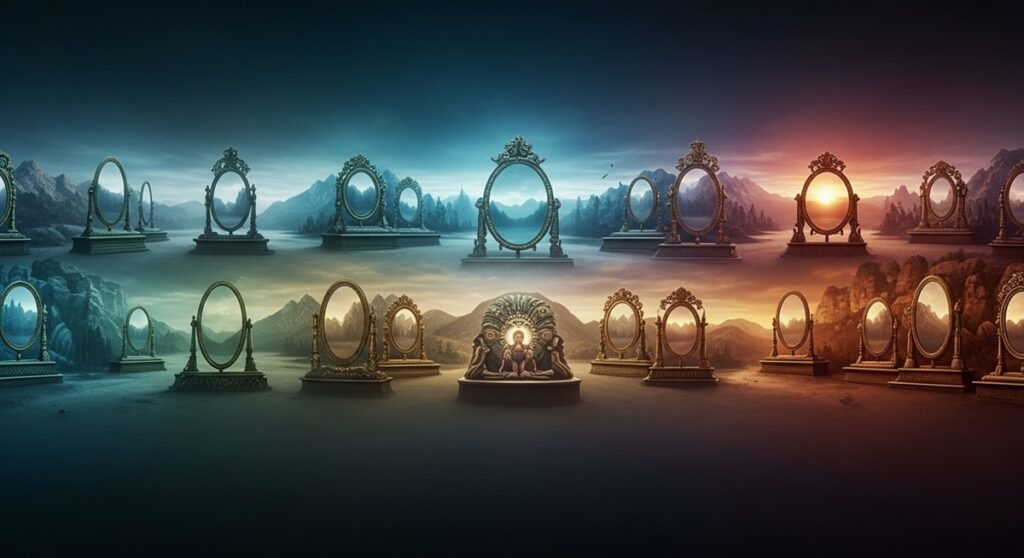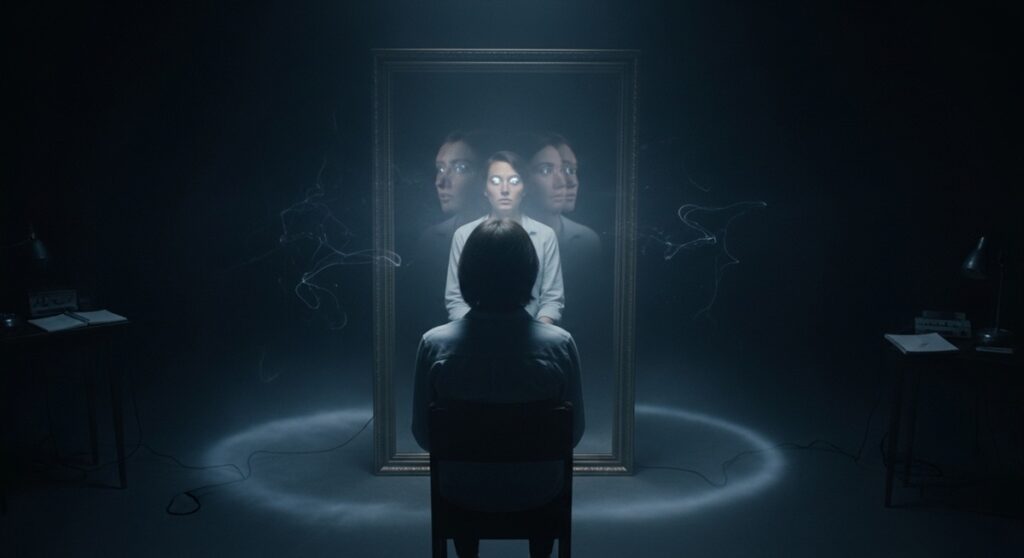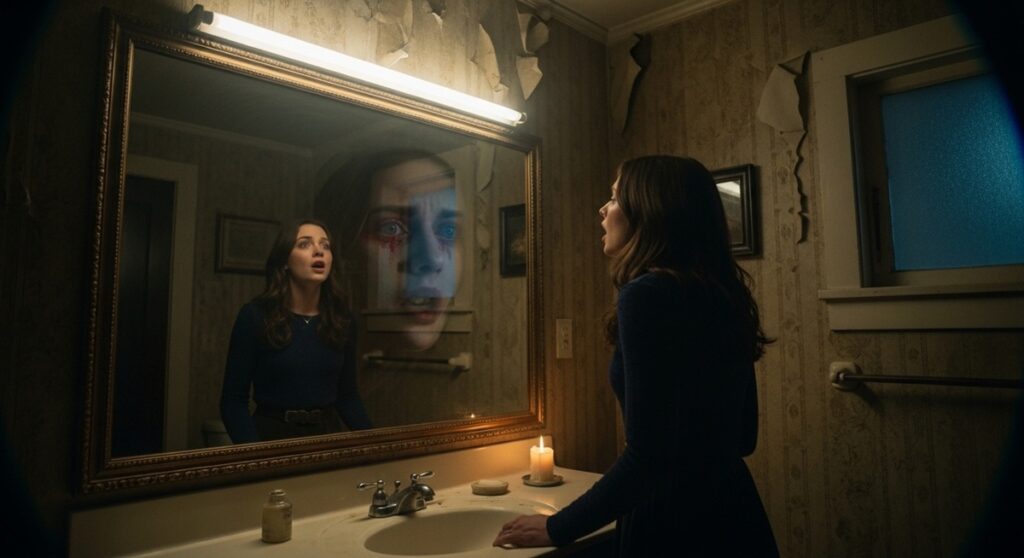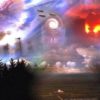Have you ever caught yourself staring a little too long into a mirror, only to feel a chill run down your spine as your reflection seems to shift—just slightly—into something unfamiliar? It’s a common experience, one that transforms an everyday household item into a gateway of unease.
Mirrors, those sleek, reflective surfaces we use for grooming or quick checks before heading out the door, carry a weight far beyond their practical purpose. They’ve been woven into human lore for millennia, symbolizing everything from vanity to the veil between life and death. But why do these ordinary objects evoke such profound mystery? Is it ancient superstition, a trick of the mind, or something deeper lurking in our consciousness?
The Mystical Heritage of Mirrors
Mirrors haven’t always been the mass-produced glass panels we know today. Their origins trace back to polished stones and metals, objects that held immense power in early civilizations. This isn’t just folklore; it’s a thread running through human history, where reflections weren’t mere images but glimpses into the soul or other realms.
Ancient Cultures and Beliefs
In ancient Egypt, mirrors crafted from polished copper or bronze were more than beauty aids, they were ritualistic tools linked to the goddess Hathor, who embodied love, music, and the afterlife. Egyptians believed mirrors could capture the essence of a person, perhaps even trapping their ka, or life force, within the reflection. Similarly, in ancient China, bronze mirrors adorned with intricate designs were buried with the dead to guide souls through the underworld, warding off evil spirits that might otherwise drag them astray. These weren’t casual beliefs; they shaped burial practices and daily rituals, underscoring a universal human fear: that mirrors could steal or reveal too much of our inner selves.
Fast forward to Mesoamerican cultures like the Maya and Aztecs, where obsidian mirrors—dark, volcanic glass—were used by shamans for scrying, a form of divination to foresee events or communicate with deities. The god Tezcatlipoca, known as “Smoking Mirror,” embodied this duality: his mirror revealed truths but also illusions, reminding users that reality could be deceptive. Across the ocean in ancient Greece, myths like that of Narcissus warned of the dangers of self-obsession, where a youth’s fatal gaze into a pool (a natural mirror) led to his demise. These stories highlight a common theme: mirrors as portals to hidden truths, capable of bridging the physical world with the spiritual or subconscious.

In African traditions, particularly among West African tribes, mirrors were seen as vessels that could trap souls or drain vitality if gazed upon too intently. This belief persists in some Vodou practices, where mirrors adorn altars to reflect offerings to spirits, inviting their presence while protecting the living. Latin American folklore echoes this, viewing mirrors as doorways to the spirit world, especially during events like the Day of the Dead, when they might accidentally summon ancestors, or worse. What ties these diverse cultures together is a profound respect mingled with fear: mirrors don’t just show us; they expose vulnerabilities in our existence.
Rituals and Superstitions
No discussion of mirror mysticism is complete without delving into the rituals that have survived centuries. One of the most widespread is covering mirrors after a death in the household. This practice, common in Slavic, Caucasian, and Western European traditions, stems from the dread that the deceased’s soul could become ensnared in the reflection, unable to transition to the afterlife. Alternatively, an uncovered mirror might serve as an open invitation for malevolent entities to cross over, turning grief into terror.
Then there’s the infamous seven years of bad luck for breaking a mirror—a superstition rooted in Roman beliefs that life renewed every seven years, and a shattered reflection disrupted this cycle. In Jewish customs during shiva (mourning), mirrors are draped to shift focus inward, away from vanity toward spiritual reflection. Asian cultures add another layer: gifting a mirror to newlyweds is taboo, as it might symbolize a fractured union. Even in modern times, these rituals linger, think of Victorian seances where mirrors were used to contact the dead, or Halloween traditions of gazing by candlelight to glimpse future spouses, only to risk seeing ghosts instead.
These superstitions aren’t relics; they influence behavior today. In some homes, mirrors facing beds are avoided due to feng shui principles, which warn they can drain energy or invite third-party interference in relationships. It’s as if humanity instinctively senses that mirrors hold a power we can’t fully control, a silent witness to our deepest secrets.
Modern Experiments with Mirror Gazing
What happens when we take these ancient beliefs and subject them to contemporary scrutiny? Paranormal investigators and psychologists alike have turned to controlled experiments, revealing that mirror gazing can induce experiences that feel eerily real—blurring the boundaries between science and the supernatural.
Scientific Studies on Strange Face Illusions
Italian psychologist Giovanni Caputo pioneered much of this work in the early 2010s. In one study, participants stared at their reflections in a dimly lit room for about 10 minutes. Astonishingly, over 66% reported seeing huge deformations in their faces, while others saw deceased relatives or fantastical beings. Caputo’s follow-up experiments with interpersonal gazing—staring into another’s eyes under similar conditions, yielded even more intense results: apparitions of animals, monsters, or unknown faces emerged, often accompanied by dissociative feelings.
A 2020 review in the Journal of Imagination, Cognition and Personality analyzed mirror and eye-gazing, finding that these practices reliably produce altered states in visual, bodily, and self-identity perceptions. Participants described sensations of derealization, where the world felt unreal, or depersonalization, feeling detached from their bodies. These are brain scans during such sessions show activity in areas linked to face recognition and emotion processing going haywire.
In therapeutic contexts, mirror gazing has been explored for grief counseling. Bereaved individuals report “conversations” with lost loved ones, providing closure, though researchers caution it can exacerbate trauma if not guided properly. One chilling case from Caputo’s work involved a participant seeing a stranger who later matched a family member’s description, unknown to them at the time, echoing tales of precognitive visions.
Paranormal Encounters and Anecdotes
Beyond labs, amateur experimenters share stories online that fuel the paranormal angle. Forums like Reddit buzz with accounts of mirror gazing leading to auditory hallucinations, whispers or names called out—or physical sensations like cold drafts. Some claim mirrors act as “radio receivers,” tuning into otherworldly frequencies, a theory popularized by investigators who use them in haunted locations.

A notable experiment at the University of Urbino involved a “mirror-gazing facility,” where subjects in low light reported anomalous experiences at rates far exceeding chance. While skeptics attribute this to suggestion, believers point to consistent patterns: the apparitions often carry emotional weight, as if the mirror unearths buried memories or connects to collective unconscious energies.
These experiments suggest mirrors aren’t passive; they amplify our inner worlds, sometimes to unsettling degrees. But is it all in our heads?
The Science Behind Mirror Ghosts: The Troxler Effect
Enter the realm of neuroscience, where what we perceive as “ghosts” might be the brain’s clever illusions. The key player? The Troxler effect, a perceptual phenomenon that explains why prolonged staring leads to bizarre visions.
How the Brain Plays Tricks
Discovered in 1804 by Swiss physician Ignaz Paul Vital Troxler, this effect occurs when fixation on a point causes surrounding stimuli to fade from view. In mirror gazing, dim lighting reduces visual input, prompting the brain to “fill in” gaps with stored patterns, often faces, thanks to pareidolia, our tendency to see human features in random shapes like clouds or toast.
When applied to mirrors, your face might morph into a monster, a deceased relative, or an alien entity after just minutes. Videos on platforms like YouTube demonstrate this: stare unblinking, and distortions emerge—eyes enlarging, mouths twisting. It’s not supernatural; it’s neural adaptation, where unchanging stimuli are ignored to conserve energy, allowing subconscious fears or memories to project outward.
Emotional states amplify this. Grief or anxiety acts as a catalyst, turning neutral reflections into haunting visions. Studies on schizophrenia patients show similar effects, suggesting mirror illusions could aid in understanding hallucinations.
Psychological Implications
On a deeper level, mirror staring reveals our psyche’s fragility. It can induce dissociative states, where self-identity blurs, leading to profound insights or distress. Therapeutically, guided mirror gazing reduces anxiety by fostering self-compassion, staring with kindness lowers stress hormones. Yet, for those with body dysmorphia or depression, it might worsen symptoms, as seen in studies where depressed individuals experienced fewer but more negative illusions.
The brain’s “auto-complete” mode isn’t foolproof; it draws from our deepest wells, making mirrors a tool for self-exploration—or a trap for the unprepared.
Cultural Myths and Legends Involving Mirrors
Mirrors permeate folklore, literature, and media, often as harbingers of doom or revelation. These stories amplify our innate fascination and fear.
Bloody Mary and Similar Folklore
The Bloody Mary legend is a rite of passage for many: chant her name three times in a dark bathroom mirror, and a vengeful spirit appears—perhaps scratching or cursing you. Rooted in 19th-century divination games for seeing future husbands, it evolved into horror, possibly inspired by Queen Mary I’s tragic life or witch hunts. Scientifically, it’s the Troxler effect at work, combined with expectation bias.

Japan’s Hanako-san haunts school toilets, summoned similarly, while Italian variants invoke witches. These global tales underscore mirrors as liminal spaces, where the veil thins.
Mirrors in Literature and Film
From Snow White’s magic mirror querying “Who’s the fairest?” to Alice tumbling through the looking-glass into wonderland, literature uses mirrors as metaphors for alternate realities. In Shakespeare’s Richard II, a shattered mirror symbolizes a king’s fall, while Tennyson’s Lady of Shalott dies after viewing the world directly instead of through her mirror.
Films amplify this: Orson Welles’ The Lady from Shanghai features a hall of mirrors shootout, symbolizing deception. Horror classics like Candyman or Oculus portray mirrors as possessed portals, trapping souls or driving madness. Even in Dracula, vampires cast no reflection, hinting at soullessness. These narratives reflect (pun intended) our cultural obsession with mirrors as windows to the unknown.
Mirrors as Metaphors for Consciousness

At their core, mirrors symbolize the human mind—reflective, deceptive, and infinite. But could there be a scientific twist involving quantum physics?
Quantum Physics Connections
Some theorists propose consciousness mirrors quantum phenomena: indeterminate, observer-dependent. The “living mirror” theory suggests awareness arises from self-referential processes, much like a mirror reflecting itself. Recent studies on microtubules in neurons support quantum effects in consciousness, where observation collapses possibilities, echoing how gazing alters perception. It’s speculative, but it bridges mysticism and science, positing mirrors as analogs for entangled realities.
The Dangers and Benefits of Mirror Gazing
While beneficial for mindfulness, reducing stress through self-acceptance, prolonged gazing risks psychological harm, like heightened anxiety or hallucinations. Approach with caution: it’s a razor-edge journey into the self.
In conclusion, mirrors remain eternal enigmas, reflecting not just our faces but the labyrinth of consciousness. Whether through ancient rites, scientific lenses, or cultural tales, they remind us that the ordinary can harbor the extraordinary. Next time you glance in one, ask: who’s really looking back?

















